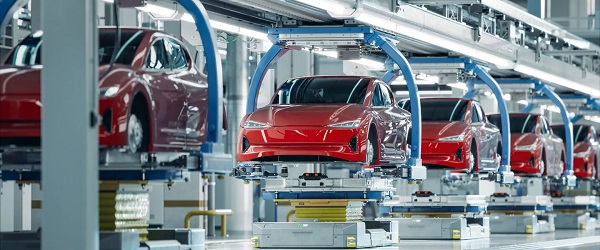Business
Changing of the Tides – How One Alberta Company Is Driving Hydrokinetic Power

The energy conversation has been a polarized debate for years and continues to hit headlines. The clean energy industry is driven by forward-thinking individuals who have one common goal, transitioning from traditional energy sources to a more sustainable form of energy. Now in 2020, we have more oil than we know what to do with, an unprecedented amount of unused facilities that require cleanup, and jobs being lost daily. We exist in a time where competition drives innovation, demonstrating proof of concept is essential to drive investment and still, unable to see eye to eye for a common approach. Let me ask you this, is it problematic for us as a society to hold onto previous conceptions of clean energy projects, regardless of what type?

Jupiter Hydro was founded in September 2010 by Co-CEO Ross Sinclaire in Calgary, Alberta. Their main focus is in-stream hydrokinetic power generation. Co-Ceo Bob Knight joined the team later in their development. If you have read into hydropower in the past, you may be aware of this type of power generation. Jupiter Hydro has taken the benefits of traditional hydropower and combined their unique technology to produce a far more cost-effective and sustainable form of hydrokinetic power generation.
Like any new technology that works to produce power in a non-traditional method, Jupiter Hydro has gone through three phases over a decade that has brought them a unique opportunity in Nova Scotia’s Bay of Fundy scheduled for later in 2020. Beginning with testing their hypothesis, proving the theory of generating rotational power utilizing an Archimedes screw presented to fluid flow at an angle was tested in an irrigation channel. With promise in their theory, they move to test their methodology developed to quantify produced power was developed using a rudimentary test tank and 3D printed screws. Mounting systems were developed and fabrications were created with cost-effective materials. In 2012, testing at the University of Calgary’s test tank began to quantify torque characteristics and confirmed blade pitch and presentation characteristics. Both the horizontal orientation and longitudinal orientation of the screw were tested, giving insight into a highly effective angle for their Archimedes screw.

Open Water Testing
Crucial for any proof of concept in hydrokinetic power generation, Jupiter Hydro began their open water testing in 2013 in the Fraser River in BC. Early tests allowed discrepancies to be addressed with submerged generators and confirmed scalability for the technology for the team. Their second open water test addressed the longitudinal placement of their Archimedes screw while testing a swing arm in open water. With support from the Canadian Hydrokinetic Turbine Test Center, they had their third and fourth test at the facility to demonstrate the technology to identify flow clearances for their swing arm. They recorded nearly 50% efficiency and formed the basis of their current design for the upcoming Bay of Fundy project.

Defining In-Stream Hydrokinetics
In-stream hydrokinetics can be defined as harnessing the natural flow of water to provide rotational power. “In-stream” means that no containment or diversions are required, meaning that obstruction of the water flow is not required; be it a river, dam outflow, canal, or tidal flow. No dams or penstocks are required, and water flow is not restricted. If we consider that there are over 8500 named rivers in Canada according to the WWF, with the addition of ocean currents or any source of flowing water, the resources are huge for this technology.
Key Innovation
If we visit the pros and cons that have been put on traditional hydro, we tend to lie on the outstanding cons that have given the industry a black eye over the last decade. As mentioned previously, competition drives innovation, to which Jupiter Hydro has adapted previous technology with a new methodology to produce a new in-stream power generation. Through multiple test phases and focusing on being cost-effective, they have created patented technology to produce power utilizing the 2,000 year old Archimedes screw with a pitch of 60% of the diameter and angled at 30 degrees to the flow to produce high torque power from the in-stream flow. Traditionally, hydropower would require a permanent infrastructure and there is a risk for large scale remediation. Jupiter Hydro does not require any permanent infrastructure and thus they do not require any remediation from environmental disturbance.

Environmental Impact
With the majority of power generating technologies, lowering the environmental impact can be one of the prominent challenges even for clean energy. If we address the main environmental concerns with hydropower, it consists of concerns of remediation of land, impacts on fish, sourcing of materials, and noise pollution. Jupiter Hydro has effectively addressed these concerns with mitigating the risk for potential investors and the societal impact of driving clean energy into the future. They have the ability to provide remote sites with dependable power without the need for extensive shore infrastructure or changes to the channel flow. The technology can provide clean power in areas historically powered by diesel generators or bio-mass. Their system in rivers can provide “base line” dispatchable power, one of the key requirements for a 100% renewable energy system.
Bay of Fundy Project
On July 3, 2019 Jupiter Hydro Inc. was granted a 2 MW demonstration permit and Power Purchase Agreement (PPA) in the Bay of Fundy by the Nova Scotia Government. This area has seen other tidal power companies like Cape Sharp Tidal and Minas Tidal and have attempted to crack into the Bay of Fundy’s 2,500-megawatt potential. The terms for Jupiter Hydro is for three sets of 5 years, totaling a 15-year project to be launched later in the year. In the image below you can see their in-stream hydrokinetic tidal platform that will be used in the 2 MW project.

Due to issues relating to the ongoing pandemic, the date of this project remains currently unknown. We look forward to future updates from Jupiter Hydro and their success in the Bay of Fundy. Nova Scotia hit a milestone last year for reaching 30% of its energy produced by renewable sources. They continue to be a key driver for this industry.
“Energy that doesn’t cost the earth”
If you would like to learn more about Jupiter Hydro, check out their website here.
For more stories, visit Todayville Calgary
(This article was originally published on May 4, 2020.)
Business
Trump confirms 35% tariff on Canada, warns more could come

Quick Hit:
President Trump on Thursday confirmed a sweeping new 35% tariff on Canadian imports starting August 1, citing Canada’s failure to curb fentanyl trafficking and retaliatory trade actions.
Key Details:
- In a letter to Canadian Prime Minister Mark Carney, Trump said the new 35% levy is in response to Canada’s “financial retaliation” and its inability to stop fentanyl from reaching the U.S.
- Trump emphasized that Canadian businesses that relocate manufacturing to the U.S. will be exempt and promised expedited approvals for such moves.
- The administration has already notified 23 countries of impending tariffs following the expiration of a 90-day negotiation window under Trump’s “Liberation Day” trade policy.
Diving Deeper:
President Trump escalated his tariff strategy on Thursday, formally announcing a 35% duty on all Canadian imports effective August 1. The move follows what Trump described as a breakdown in trade cooperation and a failure by Canada to address its role in the U.S. fentanyl crisis.
“It is a Great Honor for me to send you this letter in that it demonstrates the strength and commitment of our Trading Relationship,” Trump wrote to Prime Minister Mark Carney. He added that the tariff response comes after Canada “financially retaliated” against the U.S. rather than working to resolve the flow of fentanyl across the northern border.
Trump’s letter made clear the tariff will apply broadly, separate from any existing sector-specific levies, and included a warning that “goods transshipped to evade this higher Tariff will be subject to that higher Tariff.” The president also hinted that further retaliation from Canada could push rates even higher.
However, Trump left the door open for possible revisions. “If Canada works with me to stop the flow of Fentanyl, we will, perhaps, consider an adjustment to this letter,” he said, adding that tariffs “may be modified, upward or downward, depending on our relationship.”
Canadian companies that move operations to the U.S. would be exempt, Trump said, noting his administration “will do everything possible to get approvals quickly, professionally, and routinely — In other words, in a matter of weeks.”
The U.S. traded over $762 billion in goods with Canada in 2024, with a trade deficit of $63.3 billion, a figure Trump called a “major threat” to both the economy and national security.
Speaking with NBC News on Thursday, Trump suggested even broader tariff hikes are coming, floating the idea of a 15% or 20% blanket rate on all imports. “We’re just going to say all of the remaining countries are going to pay,” he told Meet the Press moderator Kristen Welker, adding that “the tariffs have been very well-received” and noting that the stock market had hit new highs that day.
The Canadian announcement is part of a broader global tariff rollout. In recent days, Trump has notified at least 23 countries of new levies and revealed a separate 50% tariff on copper imports.
“Not everybody has to get a letter,” Trump said when asked if other leaders would be formally notified. “You know that. We’re just setting our tariffs.”
Business
Trump slaps Brazil with tariffs over social media censorship

From LifeSiteNews
By Dan Frieth
In his letter dated July 9, 2025, addressed to President Luiz Inácio Lula da Silva, Trump ties new U.S. trade measures directly to Brazilian censorship.
U.S. President Donald Trump has launched a fierce rebuke of Brazil’s moves to silence American-run social media platforms, particularly Rumble and X.
In his letter dated July 9, 2025, addressed to President Luiz Inácio Lula da Silva, Trump ties new U.S. trade measures directly to Brazilian censorship.
He calls attention to “SECRET and UNLAWFUL Censorship Orders to U.S. Social Media platforms,” pointing out that Brazil’s Supreme Court has been “threatening them with Millions of Dollars in Fines and Eviction from the Brazilian Social Media market.”


Trump warns that these actions are “due in part to Brazil’s insidious attacks on Free Elections, and the fundamental Free Speech Rights of Americans,” and states: “starting on August 1, 2025, we will charge Brazil a Tariff of 50% on any and all Brazilian products sent into the United States, separate from all Sectoral Tariffs.” He also adds that “Goods transshipped to evade this 50% Tariff will be subject to that higher Tariff.”
Brazil’s crackdown has targeted Rumble after it refused to comply with orders to block the account of Allan dos Santos, a Brazilian streamer living in the United States.
On February 21, 2025, Justice Alexandre de Moraes ordered Rumble’s suspension for non‑compliance, saying it failed “to comply with court orders.”
Earlier, from August to October 2024, Moraes had similarly ordered a nationwide block on X.
The court directed ISPs to suspend access and imposed fines after the platform refused to designate a legal representative and remove certain accounts.
Elon Musk responded: “Free speech is the bedrock of democracy and an unelected pseudo‑judge in Brazil is destroying it for political purposes.”
By linking censorship actions, particularly those targeting Rumble and X, to U.S. trade policy, Trump’s letter asserts that Brazil’s judiciary has moved into the arena of foreign policy and economic consequences.
The tariffs, he makes clear, are meant, at least in part, as a response to Brazil’s suppression of American free speech.
Trump’s decision to impose tariffs on Brazil for censoring American platforms may also serve as a clear signal to the European Union, which is advancing similar regulatory efforts under the guise of “disinformation” and “online safety.”
With the EU’s Digital Services Act and proposed “hate speech” legislation expanding government authority over content moderation, American companies face mounting pressure to comply with vague and sweeping takedown demands.
By framing censorship as a violation of U.S. free speech rights and linking it to trade consequences, Trump is effectively warning that any foreign attempt to suppress American voices or platforms could trigger similar economic retaliation.
Reprinted with permission from Reclaim The Net.
-

 Business2 days ago
Business2 days agoWEF-linked Linda Yaccarino to step down as CEO of X
-

 Freedom Convoy2 days ago
Freedom Convoy2 days agoCourt Orders Bank Freezing Records in Freedom Convoy Case
-

 Crime2 days ago
Crime2 days agoTucker Carlson: US intelligence is shielding Epstein network, not President Trump
-

 Business1 day ago
Business1 day ago‘Experts’ Warned Free Markets Would Ruin Argentina — Looks Like They Were Dead Wrong
-

 International1 day ago
International1 day agoSecret Service suspends six agents nearly a year after Trump assassination attempt
-

 Automotive1 day ago
Automotive1 day agoAmerica’s EV Industry Must Now Compete On A Level Playing Field
-

 Business1 day ago
Business1 day agoCarney government should recognize that private sector drives Canada’s economy
-

 Bruce Dowbiggin1 day ago
Bruce Dowbiggin1 day agoThe Covid 19 Disaster: When Do We Get The Apologies?






